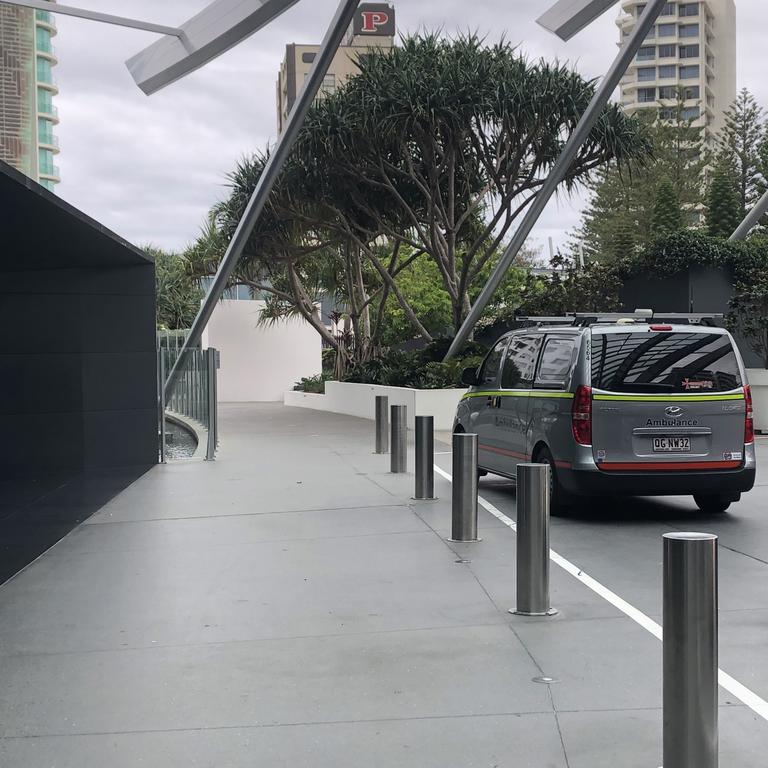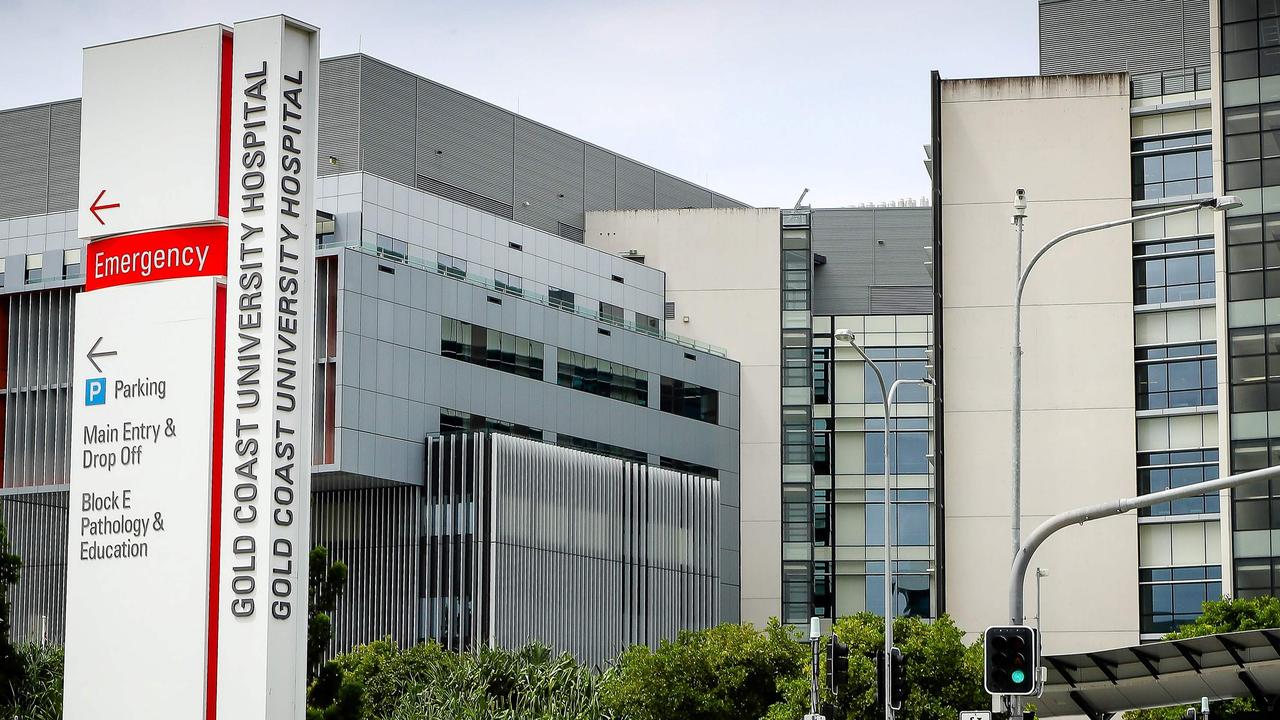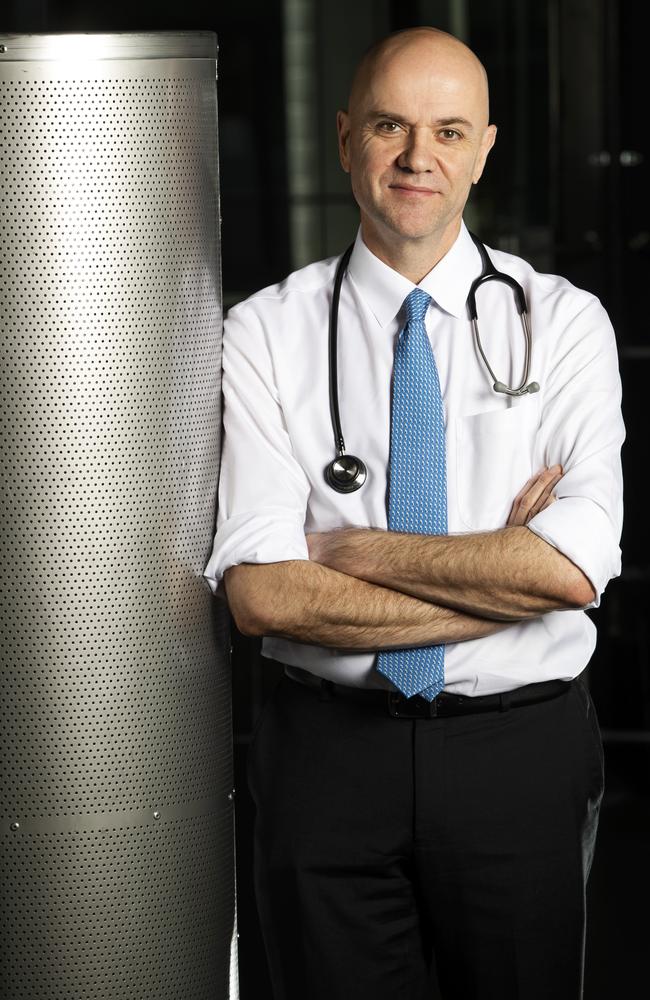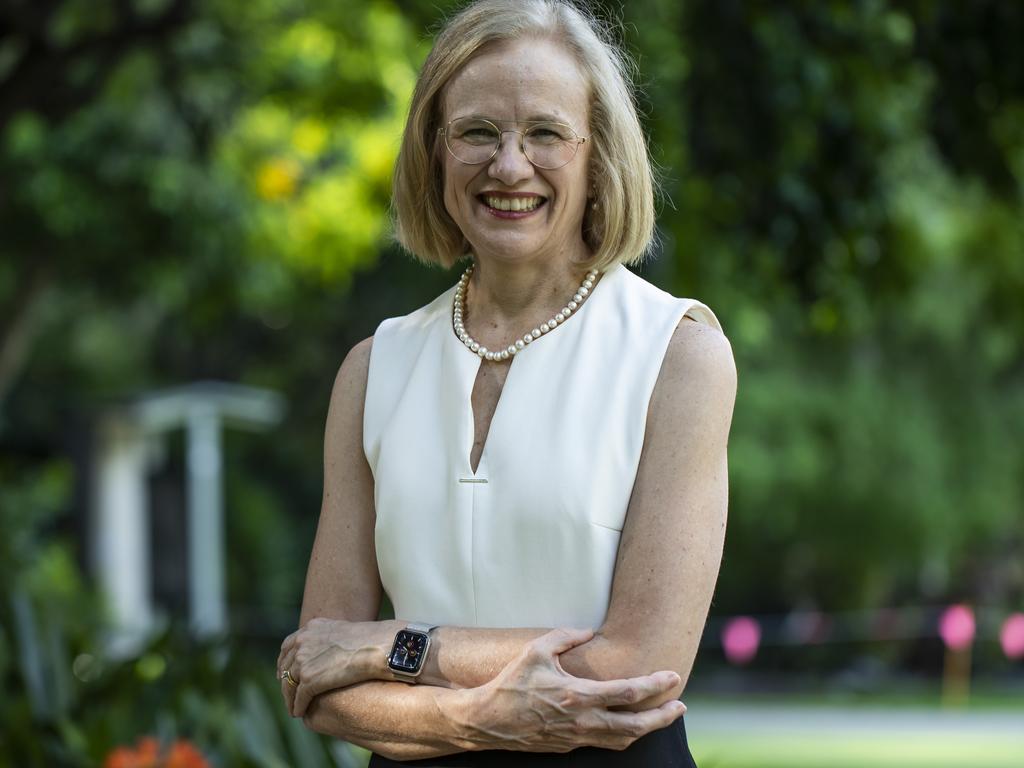Coronavirus Qld: One year on from start of pandemic
He often wondered if the pandemic he’d spent a lifetime preparing for was science fiction. Then, a year ago, it turned very real. TIMELINE
John Gerrard admits he’d often wondered whether the big global pandemic he’d spent decades planning and training for as an infectious disease physician was nothing more than fanciful science fiction.
But that changed exactly a year ago today, when a sick tourist from the Chinese city of Wuhan was diagnosed on the Gold Coast with a mystery coronavirus that had started sweeping the world.
The 44-year-old man, part of a travelling group of nine from Wuhan, was Queensland’s patient zero, the first confirmed case in the state of a virus that 12 months on, has killed more than 2.1 million people globally – and counting.

In the last week of January 2020, nine people were admitted to hospitals in Melbourne, Sydney and the Gold Coast with the so-called “novel coronavirus”.
“At that stage, the virus didn’t have a name,” recalled Associate Professor Gerrard, director of infectious diseases at Gold Coast University Hospital.
But it was obviously already widespread. If doctors were seeing patients in three Australian cities in just one week, then worldwide, “there were clearly hundreds of thousands of people already infected, though that wasn’t being reported at that time”, he said.
The realisation of a pending pandemic left Prof Gerrard feeling a mixture of fear and excitement.
“It was definitely scary, I won’t lie,” he said.
“It was also exciting. I had trained for this all my life … without knowing whether we’d see anything like this.
“Up until January last year, it was all just theoretical. We’d gone through preparedness exercises … about what we needed to do. But often in the back of our minds, you’d think: ‘Is this ever really going to happen?
“I’d often wondered whether this was all just fanciful science fiction and whether all this planning and training was ever going to be put to good use.
“We’ve planned, we’ve practised, we’ve discussed it for 30 years.”
Gold Coast University Hospital was designed to cope with a pandemic.

Input was sought from architects who were involved in hospital redesign in Canada after the SARS epidemic in 2003.
“Ironically, this hospital was designed to deal with a contagious coronavirus,” Prof Gerrard said.
“We have a specially designed isolation unit, which has 12 negative pressure rooms. It’s very easy for us to isolate patients.”
In the past year, the Gold Coast University Hospital has treated about 300 patients with SARS-CoV-2, the virus that causes COVID-19, including Hollywood couple Tom Hanks and Rita Wilson.
Back in the early days of the pandemic, Prof Gerrard said he was worried, not only about the patients in his care, but the protection of thousands of Gold Coast health workers.
“As director of infectious diseases, I’m responsible for the health and wellbeing, not just of myself and my immediate team, but for the whole hospital,” he said.
“We needed to be sure that we had processes in place such that health care workers in the hospital would not become infected.
“We have not had a single infection, touchwood, among healthcare workers as a result of their work here.”
Prof Gerrard credits some of that to the hospital’s design.

“If you look at Melbourne, for example, where they had a lot of hospital transmission, a lot of that had to do with old-fashioned hospital design,” he said.
“They had large, multi-bedded rooms with poor ventilation. You can engineer out a lot of the risk and we have engineered out much of the risk of transmission.”
The large numbers of COVID-19 patients being treated in Victorian hospitals had also contributed to infection spread.
“What happened in Melbourne, and I’ve spoken to my colleagues down there a lot, you had the problems with the hospital design, but also the sheer numbers of patients,” Prof Gerrard said.
“Once there’s such large numbers that it overwhelms the hospital, they found it impossible to maintain the infection control practices.”
After Queensland’s first COVID-19 patient was admitted to the Gold Coast University Hospital last January 28, moves were made to ring fence the virus.
In discussion with Chief Health Officer Jeannette Young, a decision was taken to admit the man’s entire Wuhan tour group of nine to the hospital’s isolation unit.

“We used it as an opportunity to see how this virus behaved,” Prof Gerrard said.
“We started swabbing all nine every day, just to see what would happen. We were surprised that some were coming back positive with little, if any symptoms, whereas others were quite sick.
“And it was obvious to us also that it was very contagious. With that travelling group of nine, ultimately six of them became infected.”
While some patients were asymptomatic, the state’s first SARS-CoV-2 case developed “high, swinging fevers for 10 days”.
He was treated experimentally with HIV medication, which failed to work, but the man ultimately recovered.
Twelve months on, despite Queensland’s success in keeping cases down to 1305, most of them acquired overseas, Prof Gerrard remains worried about the upcoming winter and complacency setting in.
His concerns are heightened with the emergence of new, highly infectious forms of SARS-CoV-2, such as the mutant UK variant, dubbed B117.
“I’m worried that everybody thinks it’s over. It isn’t,” he said. “It’s clearly seasonal and we are heading towards winter.
“I want to get on and start vaccinating people. We have a world where the pandemic is raging … and we’ve got 25 million non-immunised Australians. This won’t end until everyone’s immune because the virus isn’t going to go away.
“The critical thing is that people who are vulnerable need to be offered a vaccine that will protect them from serious illness.”
Prof Gerrard said Gold Coast Health had been preparing to roll out COVID-19 vaccines since last September.
“As soon as we get the supply, we’ll start giving it,” he said.



